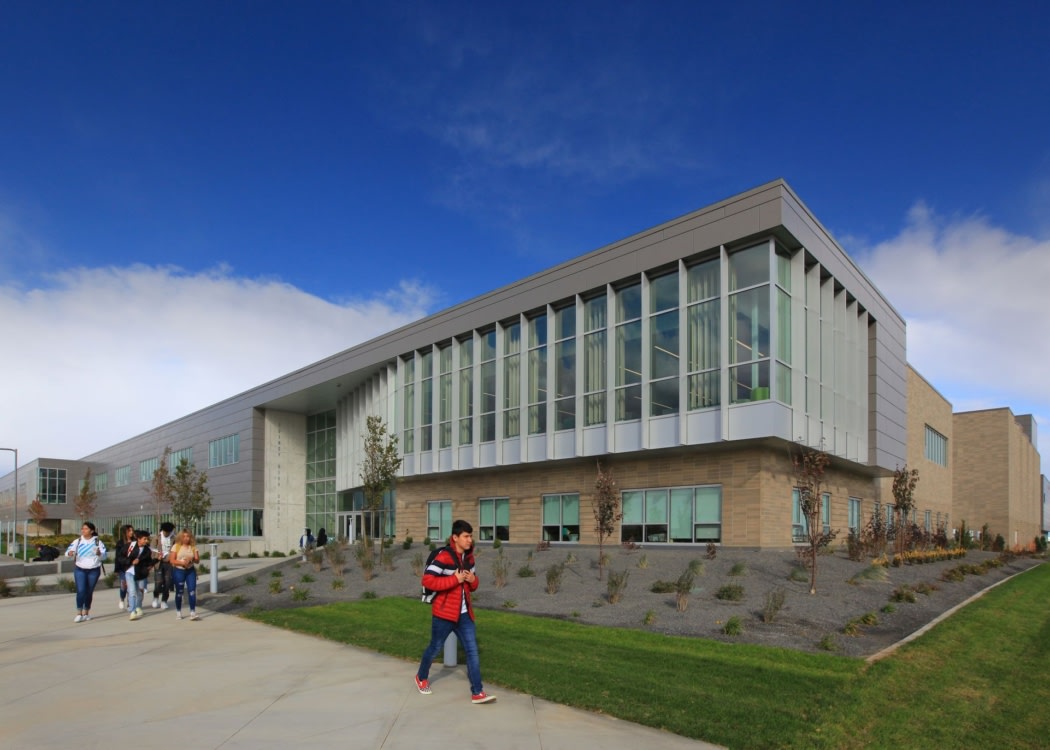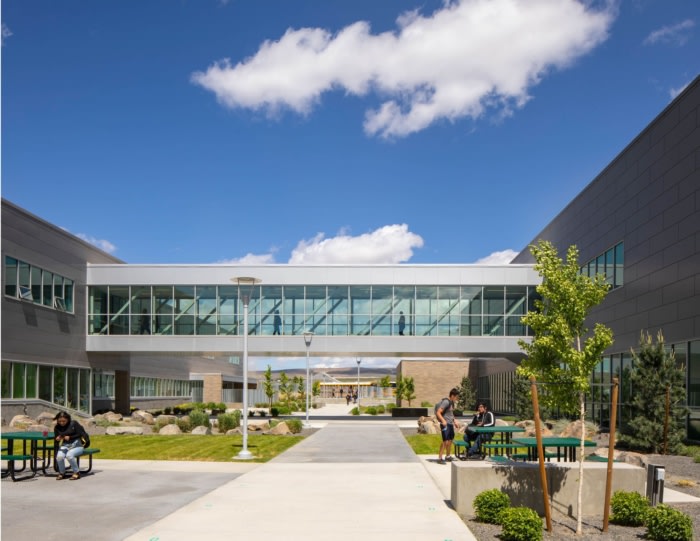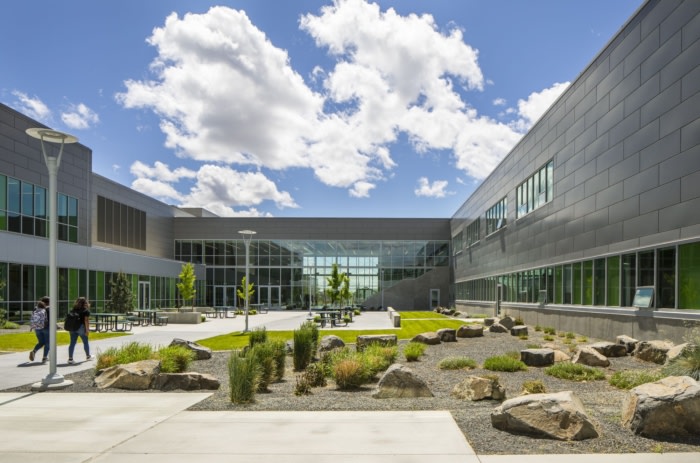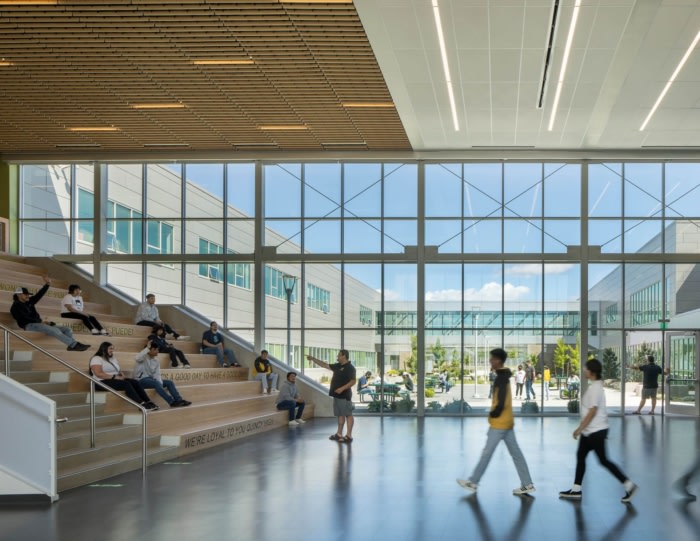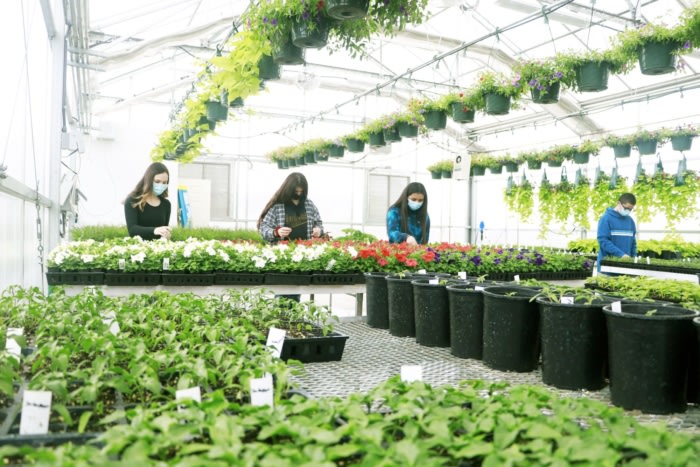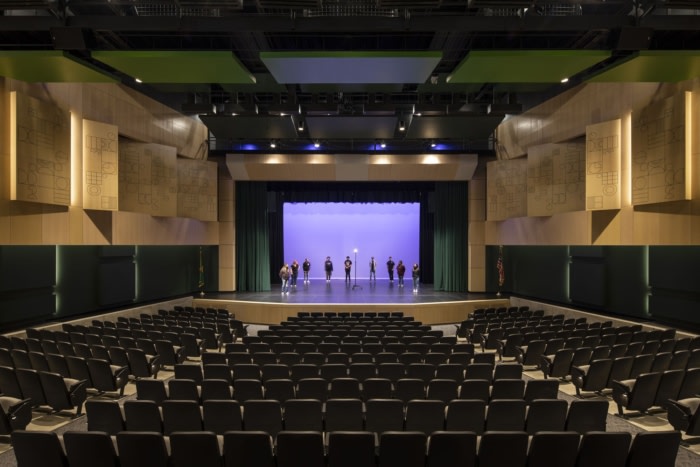Quincy High School
NAC designed Quincy High School with dynamic learning spaces and creative architecture in Quincy, Washington.
Agriculture and technology may seem like strange bedfellows, but this pairing is the source of a central Washington town’s success story and the design inspiration for a brand-new high school. While the community has strong agricultural roots, it is also a place that embraces new opportunities and has welcomed the massive data centers that have recently located there.
The new school’s simple, rectangular massing and use of concrete, masonry, wood, and metal panels reflect the agricultural structures in the area. Respecting the surrounding farm fields, a green landscaped perimeter protects the outdoor spaces from the natural elements. At the same time, refined and sophisticated detailing for both the interior and exterior introduce a high-tech aesthetic where tradition and innovation can merge and evolve.
The local landscape inspired patterns and colors applied in bold ways to give the interior a youthful, high-tech tone. The surrounding fields’ iconic shapes were translated into a dynamic visual language that celebrates the region’s physical and cultural identity. A yellow to dark green gradient performs double duty, reflecting not only the school’s mascot, but also the variety of produce grown in the area. Accentuating connections, intimate views of the interior commons balance expansive views of the plains and mountains from the outside perimeter.
Patterns were manipulated to meet different space requirements, scales, and components. In the theater, simple line work within the acoustical panels subtly hints at the community’s farming history. In other areas, the pattern includes not only fields, but also natural landmarks found within the broader region, such as the Columbia River, Ancient Lakes, and North Cascade Mountains. This intentional branding is to expand students’ perspectives—encouraging them to feel rooted and safe as well as to dream big.
An open courtyard, also known as the “outdoor commons,” is the primary organizing element. Academic spaces flanking this space connect via a second-story bridge. The interior commons further defines the courtyard with a central gathering space that serves the academic wings and provides a foyer for the main entry, auditorium, and gymnasiums. With this arrangement, activities can either spill outdoors or indoors as needed. Situating the second-story library above the administration spaces gives both functions proximity to the main entry on the west end of the interior commons.
The west academic wing encompasses general classrooms, business and computer spaces, art, special services, and an upper-level science neighborhood including shared labs. The east academic wing supports agricultural and construction fabrication shops with easy access to outdoor storage, yard spaces, and deliveries.
Along the south elevation, the façade splits and pulls apart to create a view into the interior commons—the school community’s core. Project rooms are also visible from the exterior, exposing student collaboration spaces and highlighting the importance of interactive learning in today’s high-tech world.
Design: NAC
Contractor: Fowler General Construction
Photography: Lara Swimmer

